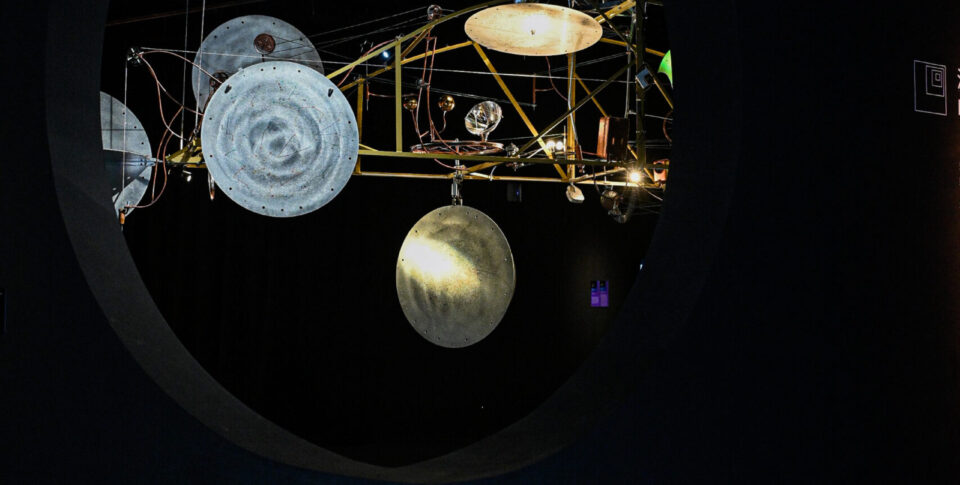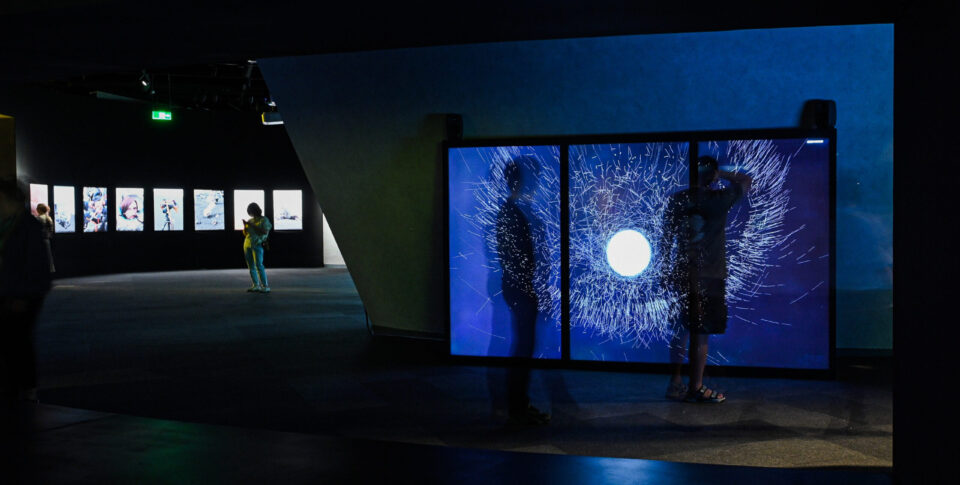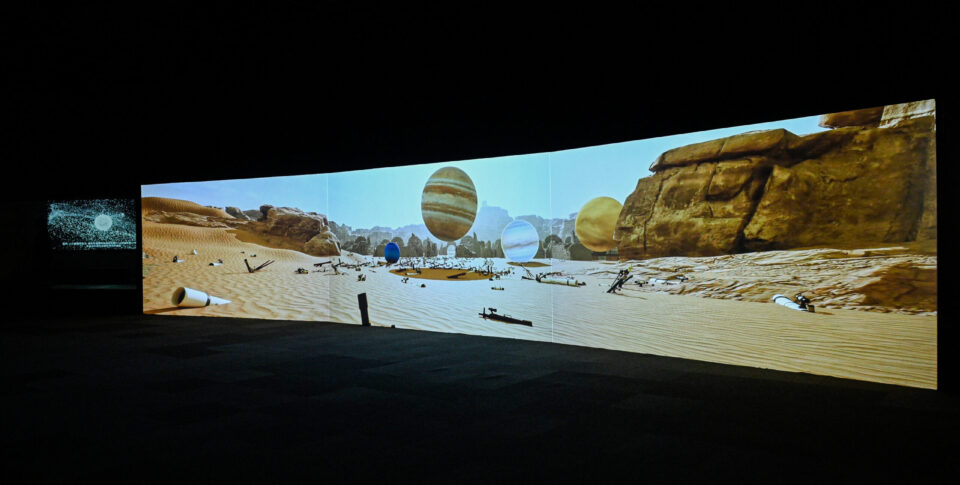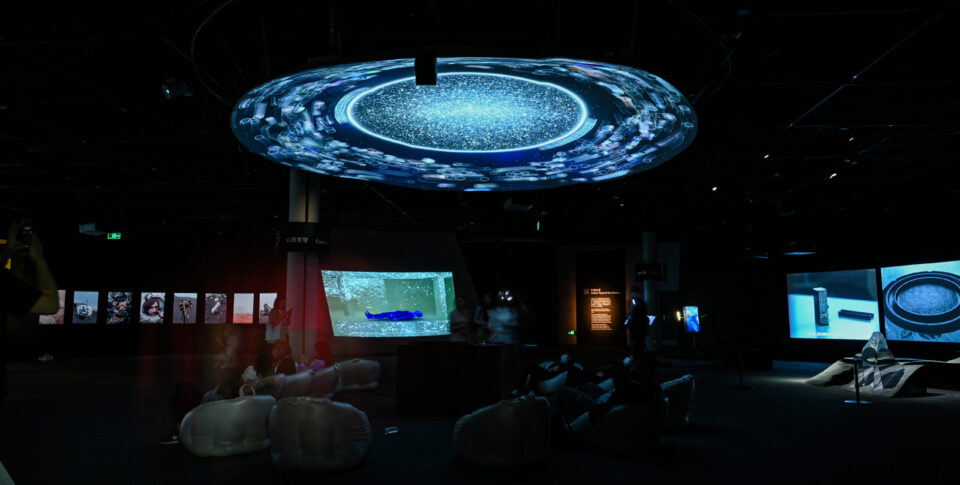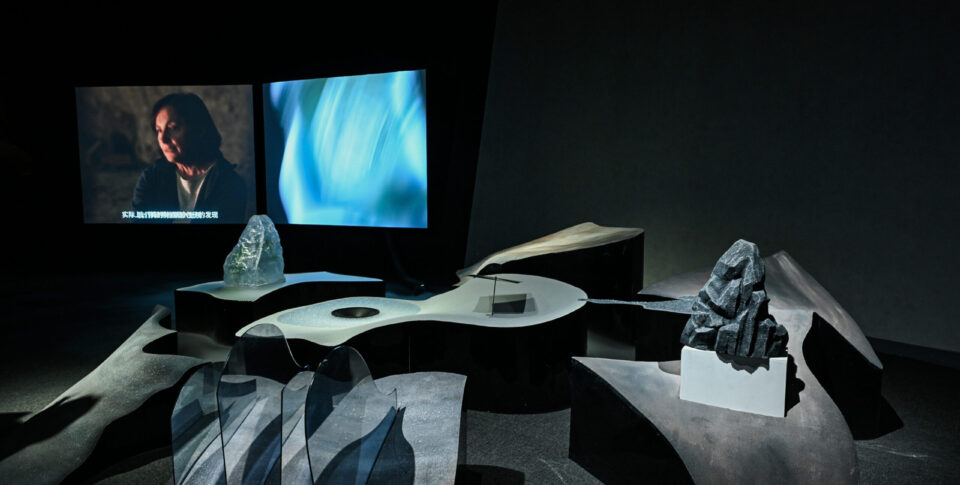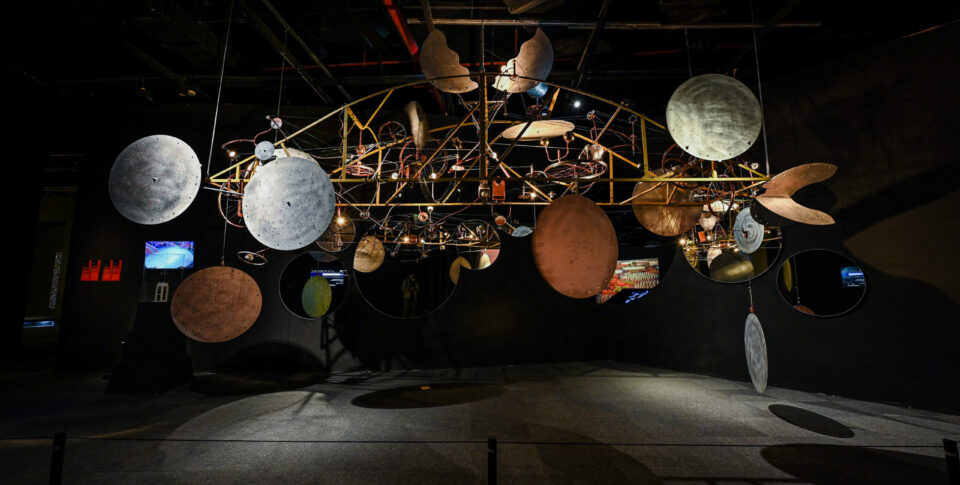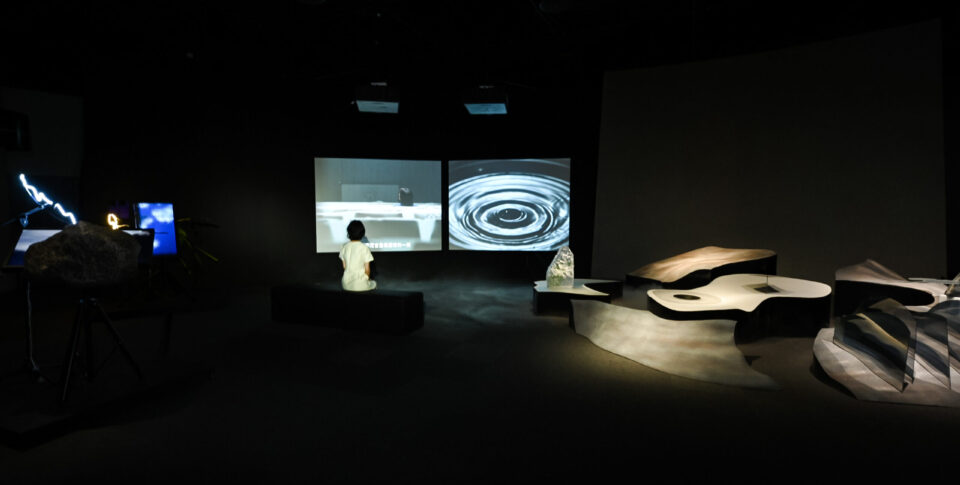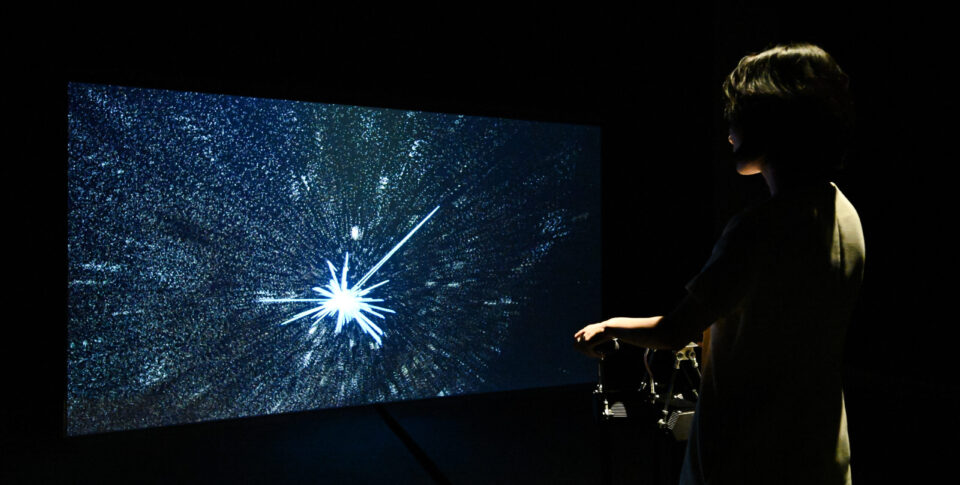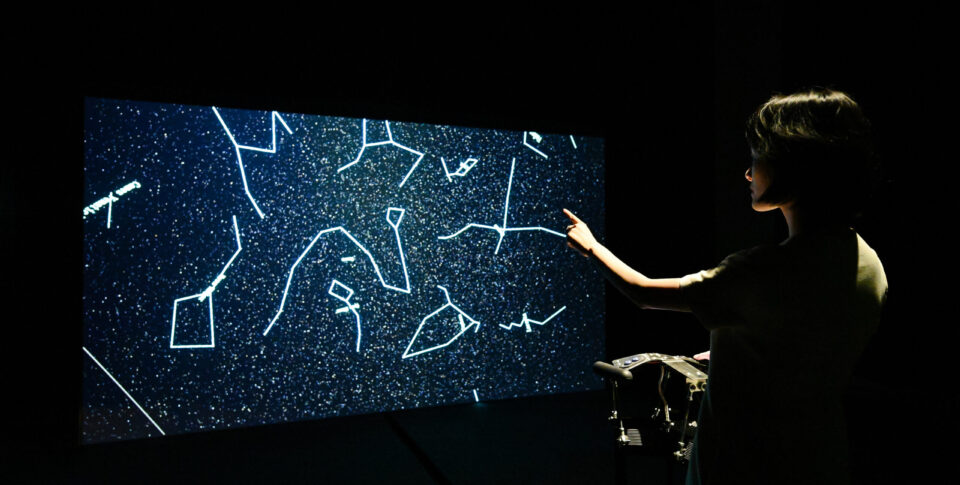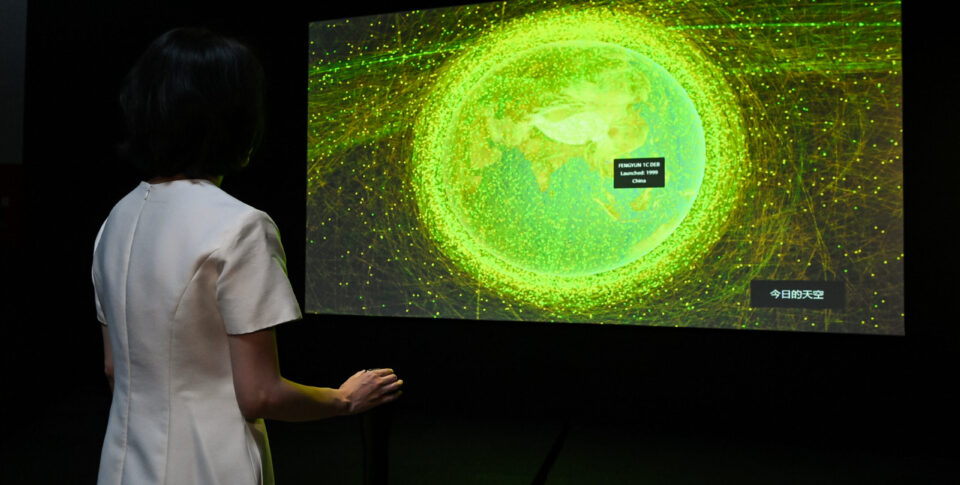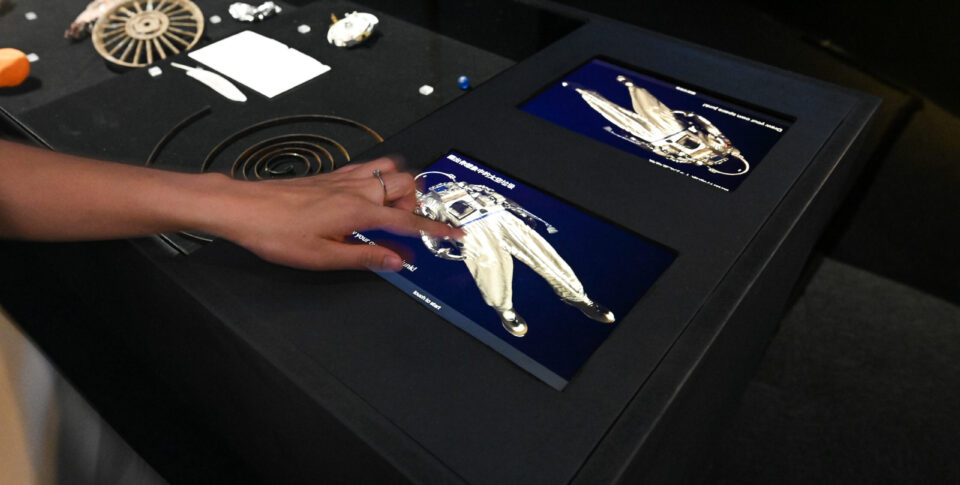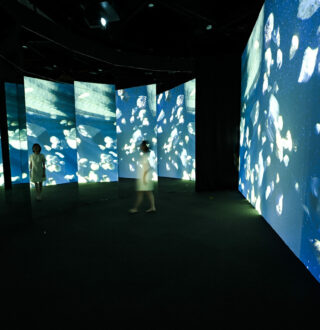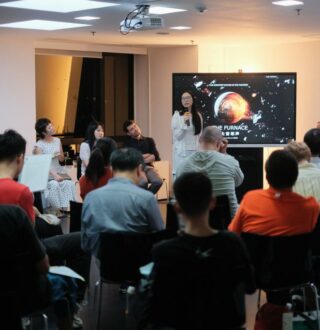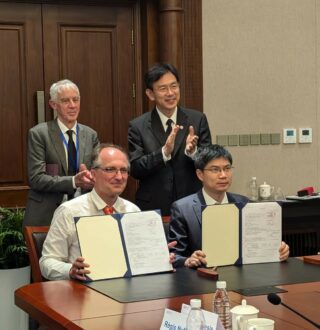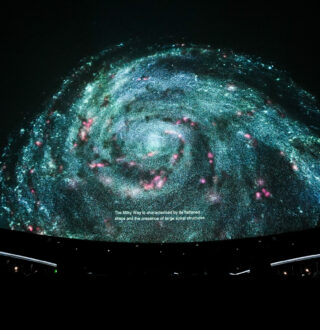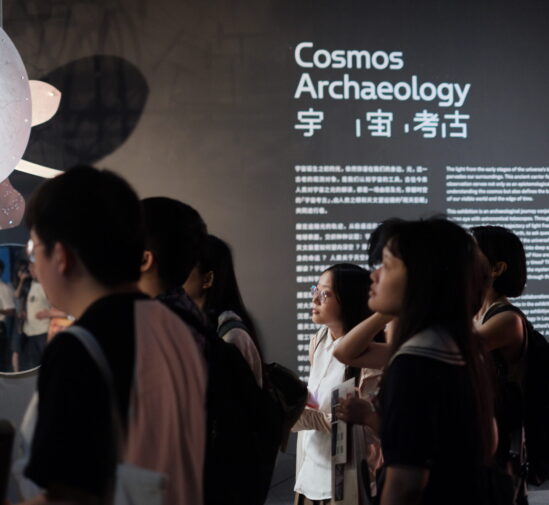
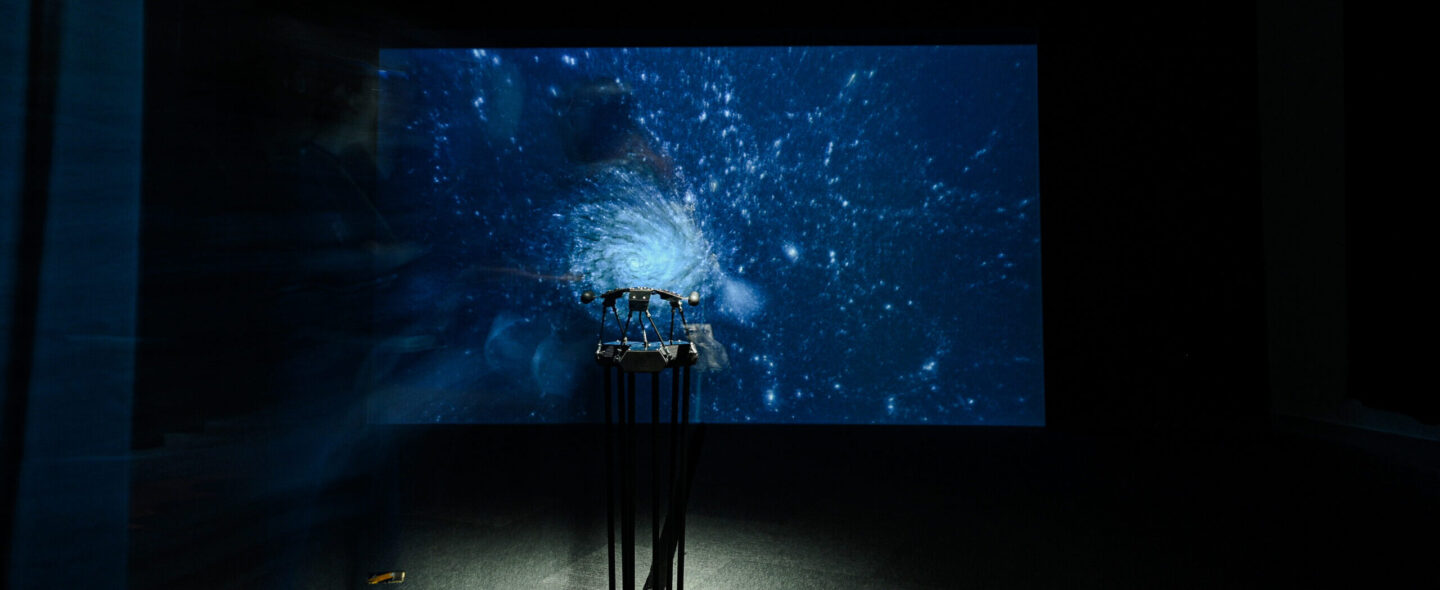
The exhibition transformed complex astrophysical data into accessible and engaging experiences, allowing visitors to explore six thematic chapters that showcased interactive installations, immersive projections, and 3D visualizations. New artworks curated specifically for the Chinese audience complemented the original installations from EPFL Pavilions, enhancing cross-cultural collaboration between Switzerland and China.
Cosmos Archaeology was curated by Professor Sarah Kenderdine (EPFL’s Laboratory for Experimental Museology), Professor Jean-Paul Kneib (EPFL’s Laboratory of Astrophysics), and independent curator Iris Long. This collaboration highlighted the potential of the humanities and science to work together, inviting fresh perspectives and fostering international dialogue about the cosmos.
A Sino-Swiss successful Arts and Science cooperation
Swissnex in China played a crucial role in the success of the Cosmos Archaeology exhibition by acting as a bridge between Switzerland and China. Swissnex in China initiated the exhibition in Shanghai, promoting collaboration in the fields of science, education, and art. This initiative showcased Swissnex’s expertise in international cooperation, bringing together various stakeholders, including researchers and artists, to create a platform for interdisciplinary dialogue and innovation.
Opening Ceremony
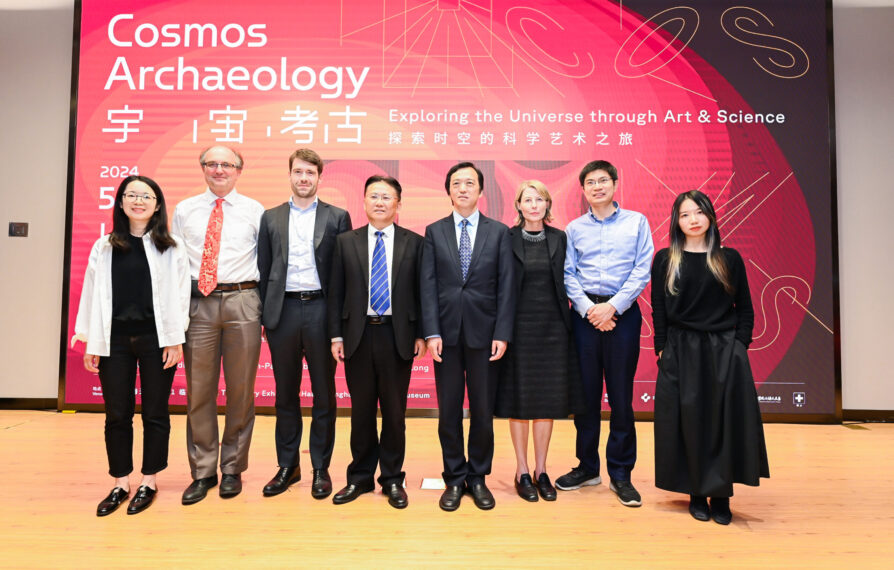
Side Events: Engaging with the Cosmos Beyond the Exhibition
In addition to the exhibition itself, a series of side events and workshops played a crucial role in expanding the conversation between art, science, and the public.
Through the Cosmic Dialogue series, leading artists and scientists were brought together to discuss the creative processes behind their interdisciplinary works. Featuring renowned figures like Semiconductor and Quadrature, the dialogues highlighted how art can poetically reinterpret astrophysical data, offering new ways to experience the universe.
Moreover, the Cosmos has long been a source of inspiration for many science fiction stories. Swissnex in China organized a Sci-Fi Creative Night showcasing the original science fiction stories by eight Fudan University students inspired by their visit to the exhibition. Their narratives sparked discussions about the emotional resonance and innovative perspectives in storytelling and the endless inspiration possibilities of the Cosmos.

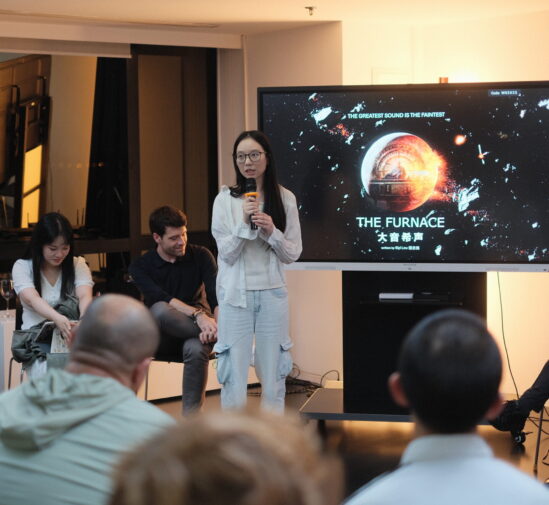
Advancing Cosmos Mapping: EPFL Joins the MUST Project
In a significant development, this year a new collaboration between EPFL and Tsinghua University on the Multi-Spectroscopic Telescope (MUST) project took place in parallel to the exhibition. The research collaboration agreement was signed in Beijing during the visit of the Federal Councillor Guy Parmelin, Head of the Federal Department of Economic Affairs, Education and Research.
The partnership aims to map the filamentary structure of the universe within its first 3 billion years, providing critical insights into dark energy and dark matter, the mysterious forces that constitute 96% of the universe’s content.
This new partnership between EPFL and Tsinghua University underscores the ongoing collaboration between Swiss and Chinese institutions and represents a major leap in cosmic discovery. Swissnex in China is proud to continue its role as a bridge for these groundbreaking scientific exchanges.
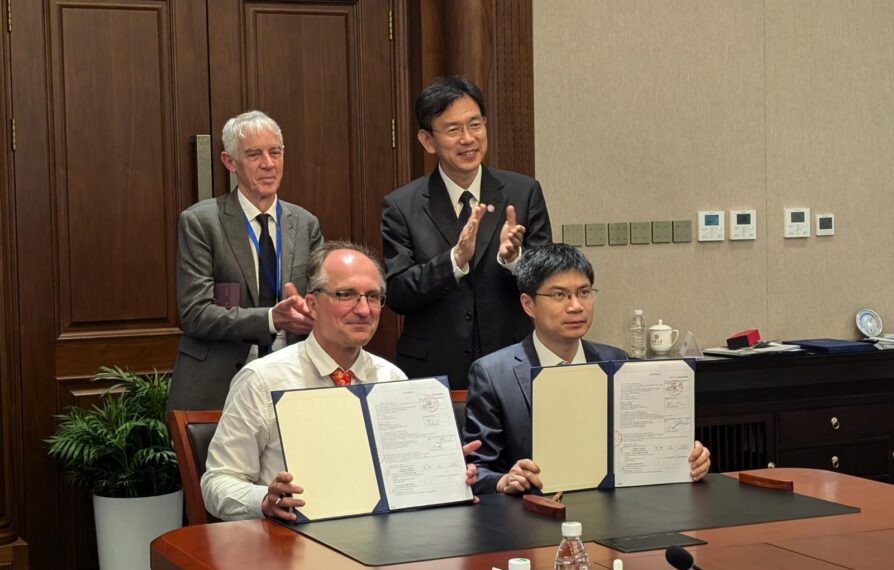
Martin Vetterli (EPFL) (top left), LI Luming (Tsinghua University), Jean-Paul Kneib (EPFL) and CAI Zheng (Tsinghua University)
Read more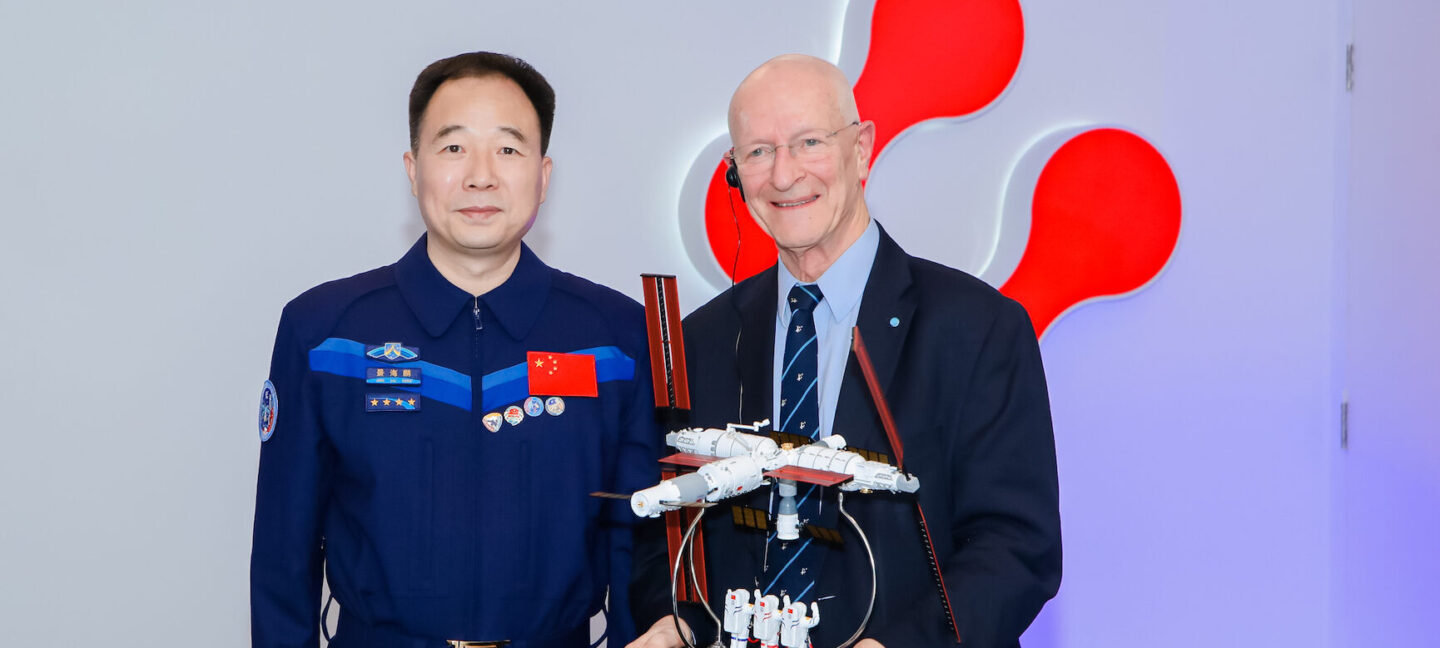
JING Haipeng and Claude Nicollier
Swiss Astronaut Claude Nicollier Attends the Cosmos Exhibition Closing Event and Sino-Swiss Space Sustainability Workshop
As the Cosmos Archaeology exhibition reached its grand finale, we were thrilled to welcome Claude Nicollier, Switzerland’s esteemed astronaut, at the official closing event and Sino-Swiss Space Sustainability Workshop. Nicollier, who has completed multiple missions aboard the Space Shuttle, captivated the audience with his invaluable insights into space exploration. The workshop gathered experts from Switzerland and China, featuring a special guest, renowned Chinese astronaut Jing Haipeng. He joined a distinguished panel of scientists, engineers, and space enthusiasts for the conversation. This out-of-space encounter marked a fitting finale to the Cosmos exhibition.
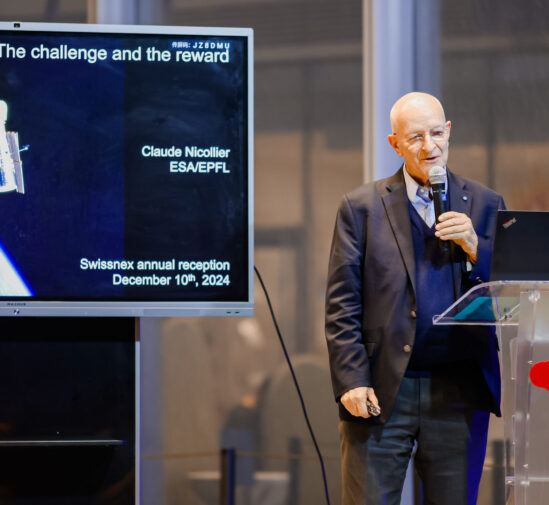
Photos of the Closing of Cosmos Archaeology and Swissnex in China's End-of-Year Event
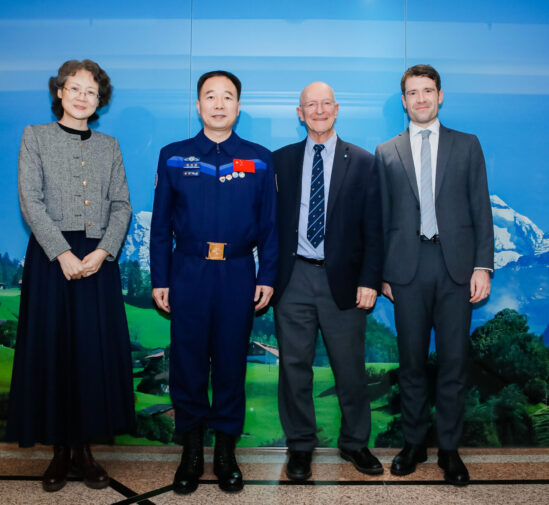
Photos from the Sino-Swiss Space Sustainability Seminar
Looking Ahead: What's Next for Cosmos Archaeology?
As the exhibition closes in Shanghai, plans are already in motion for its next chapter. The Cosmos Archaeology exhibition is set to travel in China next year, continuing to engage audiences with the latest developments in space science and artistic innovation.
Swissnex in China is excited to see how the dialogue sparked by the exhibition will continue to evolve, building on the lasting relationships formed through this exceptional project.
The Exhibition
Cosmos News
-
![]()
Cosmos Archaeology 宇宙考古
May 18, 2024 — November 17, 2024Cosmos Archaeology, Exploring the Universe through Art and Science: Swissnex in China Collaborates on a Captivating New Exhibition Blending Art and Science
-
![]()
Recap of our Sci-Fi Creative Night
October 25, 2024The Cosmos hides a lot of treasures and has long been subject to wild theories and opened countless stories based on human imagination and creativity. It seemed very natural to make a link between the Cosmos Archaeology exhibition and science fiction stories. Together with 8 creative writing students, we toured the exhibition to leave their minds to wander and create their own sci-fi stories based on the artworks. The Sci-Fi Creative Night showcased their work.
-
![]()
Two partners of the Cosmos Archaeology exhibition join forces to advance Cosmos Mapping
July 8, 2024EPFL has joined the Multi Spectroscopic Telescope (MUST) project, led by Tsinghua University, to deepen our understanding of the universe, dark energy, and dark matter. Martin Vetterli, President of EPFL, and Luming Li, President of Tsinghua University, signed a research collaboration agreement in Beijing, officially establishing EPFL as a member of the project.
-
![]()
A Stellar Opening Week of Cosmos Archaeology
May 31, 2024In the vast expanse of the universe, astronomy delves into the origins, evolution, and composition of celestial objects, offering a glimpse into the mysteries of the cosmos. This discipline has existed for thousands of years, as our civilization has always been fascinated by the stars and has sought to understand the universe and its hidden secrets.
Partners
A special thanks to all our partners who contributed to this successful project throughout the year.
